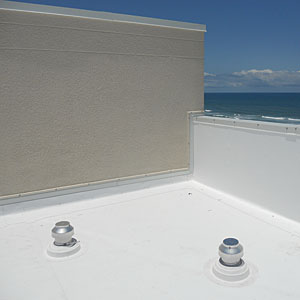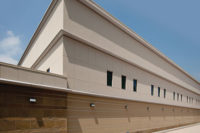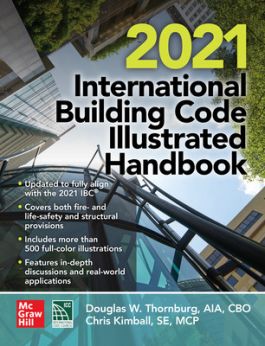The roof is the part of the building subject to the harshest conditions Mother Nature can mete out including ultraviolet light, rain, snow, hail, high winds, extreme temperature swings, foot traffic, and more. Just as a new car depreciates the minute it is driven off the lot, new roofing membranes degrade as soon as they are installed.
From a 2010 research paper “Life Cycle Costs of Commercial Roof Systems” by Coffelt and Hendrickson, roof maintenance data collected for 38 Carnegie Mellon University buildings totaling nearly 100,000 square meters revealed an average of 200 leaks per year, or 5.2 leaks per building per year for the buildings. Once water leaks develop, without a place for the water to go, it becomes trapped within the membrane assembly, and is unable to escape. It accumulates and migrates, causing damage far from the location of ingress. The Carnegie Mellon study authors calculated an average cost per leak of $1,232, nearly $250,000 per year for the 38 buildings evaluated. Without regular inspection and repair, roof leaks can cause much more—often irreparable—damage to the roofing assembly elements, costing far more. This is a common scenario, one that every low sloped roofing building owner must deal with.
There are differences in how long a roof will last, depending on type and quality but all low slope roofing assemblies eventually leak. In 1997 a roofing survey by Schneider and Keenan of more than 20,000 roofs concluded the average service life of low slope roofing membranes to be between 13.6 to 17.7 years. The survey included multi-ply asphalt as well as single ply membranes. The study was unable to correlate in service performance to warranty period, so owners beware: That 20-year warranty you are buying is no guarantee your roof will last that long.
Once a low sloped roofing assembly begins to leak and/or reaches the end of its service life, owners are faced with some important decisions. At best, portions of damaged roofing, insulation, and structure are removed and replaced with new. Worst case scenario is a complete tear-off, down to the structural deck, and a completely new system installed. Both scenarios involve significant cost, disruption to building operations, noises and odors affecting building occupants, and burdening local landfills with waterlogged roofing materials. Few could argue that a roof lasting a mere 13 to 17 years is sustainable. Is there something better?
Embrace the Suck
In 1974 engineer Thomas L. Kelly devised an ingenious way to install roofing to buildings. Kelly figured out that by ventilating a loosely laid membrane, with specially designed vent stacks located at the perimeter of the roofing field, negative pressures were formed when the wind blows—sucking the membrane tightly to the insulation/deck underneath. Called pressure equalized or negative pressure or vented roofing membrane assembly, Kelly’s 2001 Company has installed more than 15,000 of these unique roofing systems over 40 years, some with warranties of 50 years.
Poking holes in the roofing membrane to make it work better is counterintuitive, but poking holes in the membrane in the right place, at the right intervals, and using the right type of hole presents many advantages over a standard roofing membrane assembly.
- Advantage Number 1: The greater the wind speed, the more tightly the roof sucks itself into the building. This system has been tested and tested and tested—up to an unprecedented 255 pounds per square foot at both UL and Factory Mutual testing facilities—without failure. It passes strict Dade County approvals and is used in many high wind speed and hurricane prone regions. This membrane system is, in fact, ideal for those conditions.
- Advantage Number 2: No adhesive, and fewer fasteners. Because the membrane needs to be loose laid for the venting mechanism to work, there is never any adhesive used to secure the membrane to the deck. Mechanical fasteners are required only at the perimeter of the roof area, and very few are needed to secure the perimeter of the assembly so it can do its thing.
- Advantage Number 3: The membrane assembly is permanently ventilated. This is a neat trick that is unique to this roofing membrane system. Any moisture in any part of the roofing assembly below the membrane dries to the exterior of the building through the perimeter vents—for the life of the assembly.
- Advantage Number 4: Cost. Because this system uses no adhesive, very few mechanical fastened, and is quickly installed with a small crew, the system is routinely less to install than alternative systems.
The Case for Green
A building’s durability is often equated with sustainability, the more durable the material or system, the more sustainable it is. But estimating durability is a guess, at best. It should be a shock to everyone that one of the most important parts of a building, the roof, lasts for as little as 13½ years. For less cost, every building with a 2001 Company vented roofing assembly could see this time period extended by two, or even three times. And at the end of this period? Simply install a new 2001 Company membrane directly over the top, and go another 30 years!
Owners with roofing systems that are leaking now and in need of repair or replacement can save money, time, reduce landfill burden, and protect building occupants by leaving the water soaked system in place and installing a 2001 Company system directly over the top. In fact, many of the 2001 Company’s systems have been used in exactly this way, with data showing that the water in the failing system leaves the building through the continuous venting of the system, with insulation retaining 90 to 100 percent of its original R-value in the process. Think of it as a GoreTex jacket draped over the roof—keeping bulk water out but letting water vapor escape.
And how about all of those roofing failures in hurricane country and areas with high winds? A thing of the past if using a 2001 Company system. The higher the wind speed, the better the performance. No failure equals no collateral building damage, no repair and no replacement.
Conclusion
So, consider this strange roofing membrane assembly for your next project, be it new or a re-roofing job, and enjoy the satisfaction that you made, quite possibly, the greenest choice possible in doing so.









